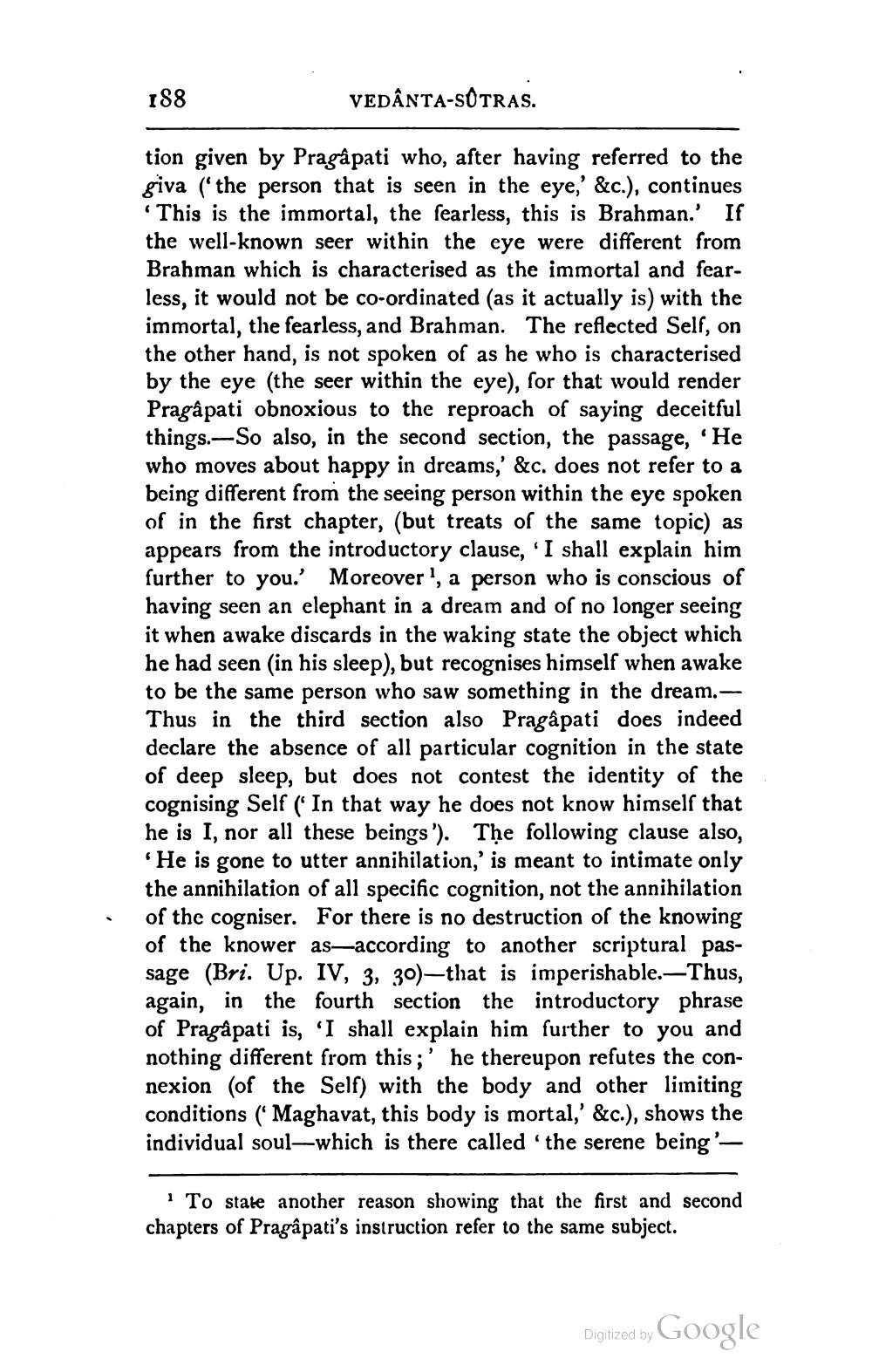________________
188
VEDÂNTA-SOTRAS.
tion given by Pragâpati who, after having referred to the giva ('the person that is seen in the eye,' &c.), continues
This is the immortal, the fearless, this is Brahman.' If the well-known seer within the eye were different from Brahman which is characterised as the immortal and fearless, it would not be co-ordinated (as it actually is) with the immortal, the fearless, and Brahman. The reflected Self, on the other hand, is not spoken of as he who is characterised by the eye (the seer within the eye), for that would render Pragâpati obnoxious to the reproach of saying deceitful things.-So also, in the second section, the passage, He who moves about happy in dreams,' &c. does not refer to a being different from the seeing person within the eye spoken of in the first chapter, (but treats of the same topic) as appears from the introductory clause, 'I shall explain him further to you. Moreover', a person who is conscious of having seen an elephant in a dream and of no longer seeing it when awake discards in the waking state the object which he had seen (in his sleep), but recognises himself when awake to be the same person who saw something in the dream.Thus in the third section also Pragâpati does indeed declare the absence of all particular cognition in the state of deep sleep, but does not contest the identity of the cognising Self (' In that way he does not know himself that he is I, nor all these beings'). The following clause also,
He is gone to utter annihilation,' is meant to intimate only the annihilation of all specific cognition, not the annihilation of the cogniser. For there is no destruction of the knowing of the knower as-according to another scriptural passage (Bri. Up. IV, 3, 30)—that is imperishable.—Thus, again, in the fourth section the introductory phrase of Pragâpati is, 'I shall explain him further to you and nothing different from this;' he thereupon refutes the connexion of the Self) with the body and other limiting conditions (* Maghavat, this body is mortal,' &c.), shows the individual soul-which is there called the serene being'
To state another reason showing that the first and second chapters of Pragapati's instruction refer to the same subject.
Digitized by
Digitized by Google




